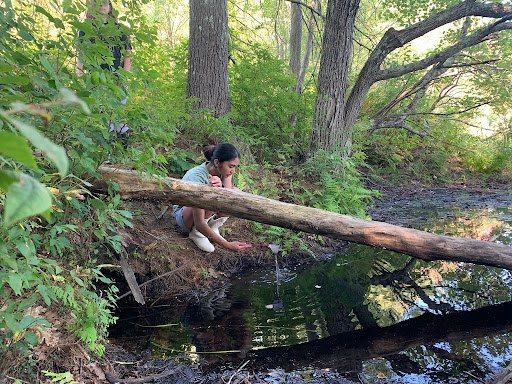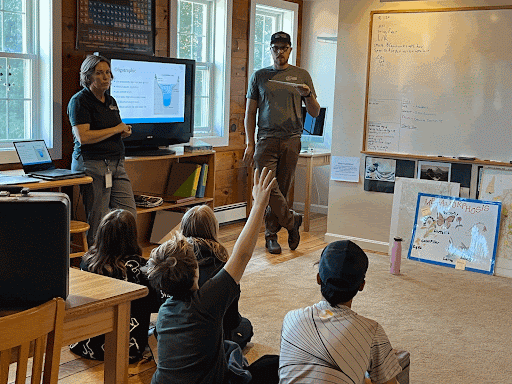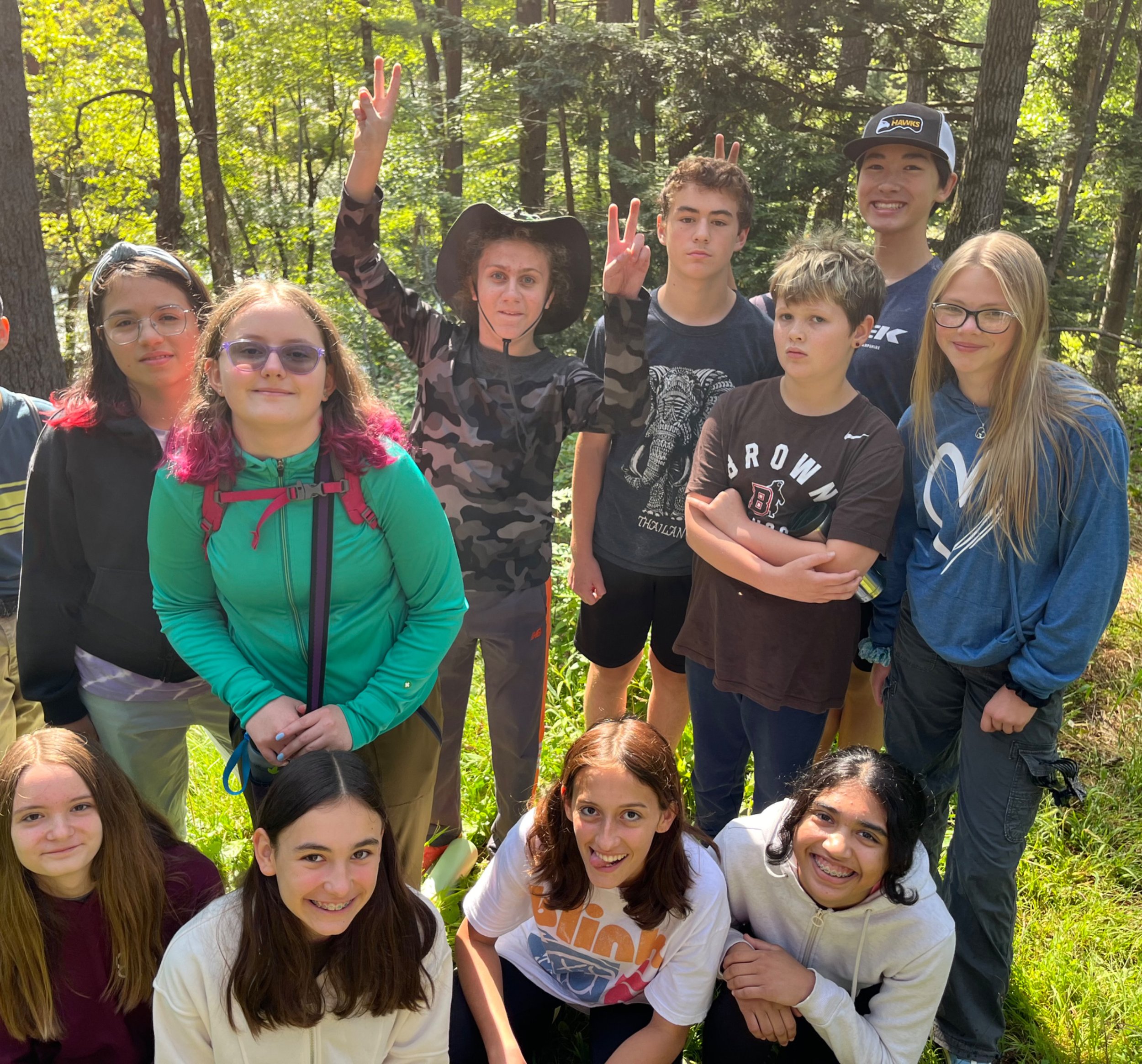If you have been on campus at Hollis Montessori School at the end of the day lately, you may have noticed Adolescent Program (AP) students and guides hiking up from the pond looking wet, tired, and happy. They have been studying Dunklee Pond in the Hollis Town Forest. This fall they are doing a water quality assessment of Dunklee Pond to submit to the NH Department of Environmental Services. The Adolescent Community has taken on a water quality study every few years so they have now begun to accumulate long term data and can begin to look at the trends.
There is so much science necessary to test the water in the pond says AP Guide Susan Holmes Glazier, “we have been up to our eyeballs in aquatic plants, benthic macroinvertebrates, dissolved oxygen levels, sampling methods, hydrogen bonding, and plankton nets.”
Taking one example—macroinvertebrates—the class needed to sample the macroinvertebrates in various sample locations throughout the pond because the diversity of species can indicate high or low quality water. First the students had to answer more foundational questions like “what is a macroinvertebrate?” and “What does benthic mean?” Already this requires lessons about animal classification, invertebrates vs vertebrates, and the ecological regions that make up a lake ecosystem. Scooping up a prehistoric looking dragonfly nymph under the mud and leaf debris at the water’s edge can make one say “wait, what? That thing turns into a dragonfly?” Then there have to be lessons on metamorphosis. But what do dragonfly nymphs eat? How long do they live? Are they indicators of good water quality or are they some of the pollution tolerant macroinvertebrates?
Another example of the richness of science learning in this study is nitrogen, phosphorus, or oxygen levels in the water. Why are these elements important and what is their effect on water quality? The class uses high quality testing equipment, similar to what field biologists use. In fact, last month two NH Department of Environmental Sciences biologists spent the day in the AP classroom and on the pond teaching the class more about sampling methods, identifying some of the more obscure aquatic plants they collected, and sharing more specialized equipment. To conduct the chemical tests, the students needed to learn how to take accurate measurements, do titrations, follow procedures precisely, and interpret their data. What is the meniscus and how do I read it properly? This question lead to lessons on the properties of water such as adhesion, cohesion, and hydrogen bonding. These are just two examples of the many scientific concepts and skills the AP class has dug into already. From the atomic level, to individual species, to ecosystems, to the classification of all living things, this study requires it all: chemistry, biology, and ecology. “We have jumped right in with both feet” says Guide Susan, who went on to note that “they jumped right into the pond as well as into the investigations!”
But wait, there’s more…In addition to the science of water, during the two and half weeks of the study, they also began Algebra (AP students typically receive high school credits for Algebra I and Geometry by the end of 9th year); started telling stories in Spanish; focused on storytelling and descriptive writing in Writing Seminar; began learning how to conduct Socratic Seminars while reading the book A Long Walk to Water; learned canoeing skills including deep water rescues and proper paddling technique in preparation for their late September rafting trip in Maine; applied composition and design art lessons to make collages on their planners, harvested crops from the garden in preparation for their first Sunny Orchard** sale of the season; prepared and ate Community Lunch together; played a lot of team building games; and had a lot of fun! This is a vibrant and dynamic community of scholars who work hard and play hard. It is amazing to realize that we’re only 1 month into the school year! Kudos to the AP Community for such a good start to the year.
** Sunny Orchard is the small business run by the Adolescent Program. The students do market research, create products, and sell them to the school community. They also do the marketing and accounting work for the business. Past and ongoing products have included eggs from the class flock of chickens, fresh vegetables, hand pressed cider and cider vinegar, beeswax candles from the class hives, holiday candies and wreaths, handmade soap, and so much more!









